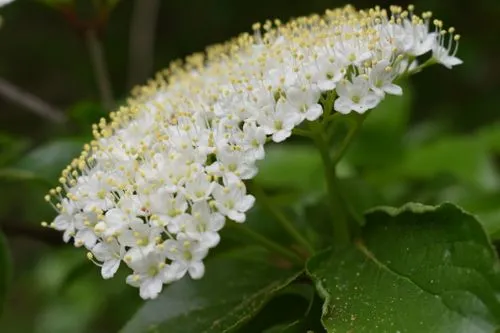Table of Contents for Pallid Milkweed (Asclepias cryptoceras)
Pallid Milkweed (Asclepias cryptoceras) is a herbaceous perennial that is native to the western United States. This plant is a host to the Queen (Danaus gilippus) and Monarch (Danaus plexippus) butterflies. Growing from 0.4 to 1 feet tall, this species has green-yellowish flowers with a purple corona that bloom from April to June. It is hardy in zones 4-7.
Taxonomy and Naming of Pallid Milkweed (Asclepias cryptoceras)
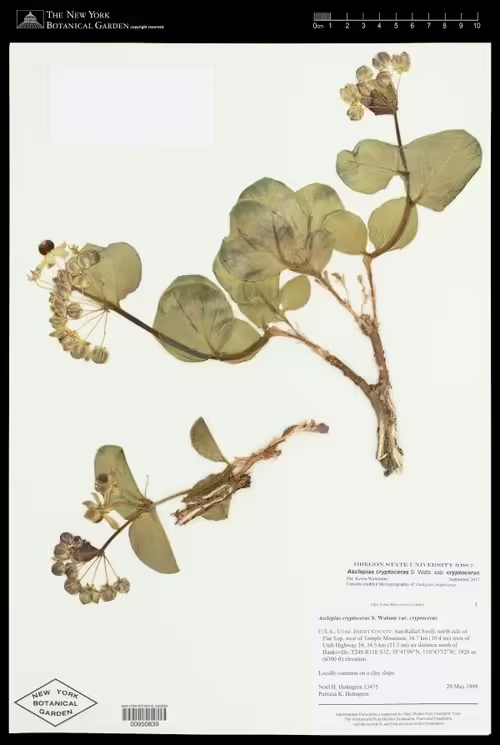
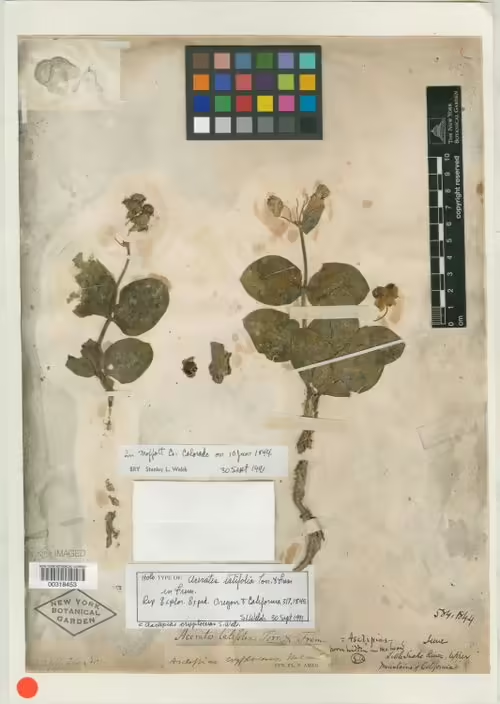
Taxonomy
Pallid milkweed (Asclepias cryptoceras) was named and described by Soreno Watson, an American botanist, in 1871. The species has kept this name since and is a member of the Dogbane Family (Apocynaceae).
Meaning of the Scientific and Common Names
Scientific Name
The genus name, Asclepias, is named for the Greek god of healing, Asklepios (Flora of Wisconsin). The species name, cryptoceras, comes from the Greek word for hidden horn (Dictionary of Botanical Epithets).
Common Name and Alternative Names
The common name describes the off yellow flowers of the plant. Other common names include Humboldt Mountain milkweed for the location of the plant, jewel milkweed, for the jewel-like appearance on the desert floor (Payson 1916), Davis’ milkweed (A Guide to Common Milkweeds of Nevada (pdf)), for a describer of the plant, cow cabbage (Dave’s Garden), prostrate milkweed (Fleming 1920) and hidden-horn milkweed (Welsh et al. 1978).
Physical Description of Pallid Milkweed (Asclepias cryptoceras)
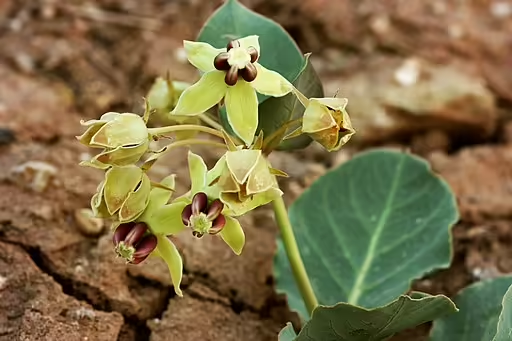
Description
- Plant Type: This plant is a herbaceous perennial.
- Height: 0.4 to 1 foot
- Stem: prostrate to decumbent
- Leaves: The leaves are opposite, simple, sessile to short-petiolate, entire, and cordate to ovate in shape (Woodson 1954). The leaves are generally 1.5 to 3 inches in length and 1 to 2.5 inches wide (xerces.org (PDF)). The leaves have been described as being leathery (Fleming 1920) and glaucous (Heil, et al. 2013).
- Flower color: yellowish-green (Woodson 1954) or creamy white (Heil, et al. 2013), the flowers are nodding in this species
- Blooming period: This plant blooms from April to June.
- Fruiting type and period: This plant has follicles that mature in the late summer and fall.
Range of Pallid Milkweed (Asclepias cryptoceras) in the United States and Canada
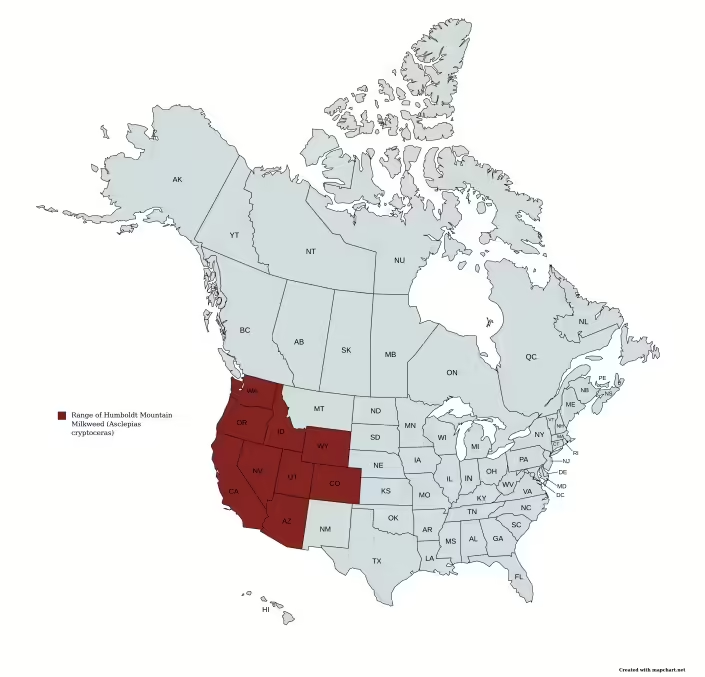
This milkweed species is native to the western United States. It is considered to be rare in the state of Arizona, but is generally considered to be uncommon wherever it occurs.
Habitat
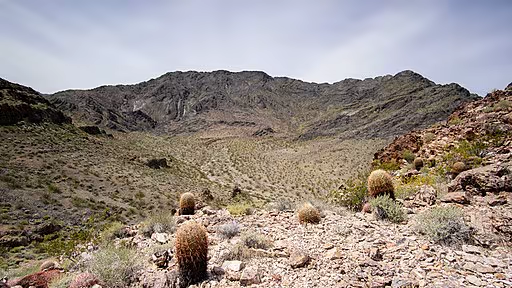
This species grows in sandy and rocky washes, canyon bottoms (Jepson eflora), roadsides (Mason 1964), and talus slopes (Baker 1971).
Hosted Insects

This species is a host for the Monarch Butterfly (Danaus plexippus), the Queen Butterfly (Danaus gilippus), and the White-lined Sphinx (Hylas lineata).
Other Supported Wildlife
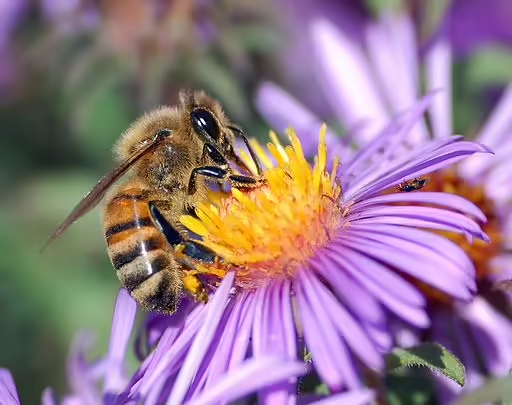
This species is a nectar source to other butterflies, skippers, bees, and wasps during the growing season. One report noted that this species may only be pollinated by one species of bumblebee (Bombus morrisoni) (Payson 1916). However, this was also disputed in another article (Robertson 1918).
Frequently Asked Questions about Pallid Milkweed (Asclepias cryptoceras)
Is this plant poisonous?
Like other milkweeds, it has cardiac glycosides (cardenolides) and is considered to be poisonous with ingestion. However, it has been shown that this plant does not contain enough of these compounds to be a threat to livestock (Fleming 1920).
Does this plant have any ethnobotanical uses?
The Native American Ethobotanical Database shows that this plant has been used for skin disorders, pain relief, and veterinary uses. It has also been noted for headaches and the treatment of ringworm (Heil, et al. 2013).
How is this plant distinguished from other milkweeds?
This species is similar to the African milkweed (Asclepias fruticosa) and the heart-leaf milkweed (Asclepias cordifolia). It differs from African milkweed in that African has linear leaves and this species has leaves that are wider. Heart-leaf milkweed has purple flowers, while this species has yellowish-green flowers. Utah milkweed (Asclepias labriformis) is also close to this species, but Utah milkweed has longer leaves that are lanceolate to linear-lanceolate (Tidestrom 1925).
Is this plant invasive?
This plant has not been shown to be invasive.
Gardening with Pallid Milkweed (Asclepias cryptoceras)

Hardiness
This species is hardy in zones 4-7. If your garden is within these zones and you have the right growing conditions (soil, moisture and exposure), you may well be able to grow this plant. However, if planted outside of its range, the hosted species may not recognize the plant or be harmed by ingesting a different species with an unfamiliar chemical composition.
Optimal Conditions
This species grows best in places it can receive full sun and dry and/or rocky sandy soils.
Planting Pallid Milkweed
The seeds of this species, require a period of cold stratification in order to germinate. Because of this it is best to plant the seeds in the fall or early winter. If you get your seeds commercially, make sure that they have been cold stratified.
References
- Baker, William H. 1971. Noteworthy Records of Western Plants. Madrono 21: 199-200.
- Fleming, C.E. 1920. The Narrow-leaved milkweed (Asclepias mexicana) and the broad-leaved or showy milkweed (Asclepias speciosa): plants poisonous to live stock in Nevada. (Reno: University of Nevada).
- Heil, Kenneth D., Steve L. O’Kane, Linda Mary Reeves, and Arnold Clifford. 2013. Flora of the Four Corners Region: Vascular Plants of the San Juan River Drainage, Arizona, Colorado, New Mexico, and Utah. Monographs in Systematic Botany – Missouri Botanical Garden v. 124.
- Mason, Charles T. 1964. Notes on the Flora of Arizona. III. Madrono 17: 236.
- Payson, Edwin. 1916. The Pollination of Asclepias cryptoceras. Botanical Gazette 61 (1): 72-74.
- Robertson, Charles. 1918. Pollination of Asclepias cryptoceras. Botanical Gazette 66 (2): 177.
- Tidestrom, Ivar. 1925. Flora of Utah and Nevada. Contributions from the United States National Herbarium 25: 1-635.
- USDA Soil Conservation Service. 1973. List of Common and Scientific Plant Names for Utah. (Portland, OR: USDA).
- Welsh, Stanley L., Duane N. Atwood, and Joseph R. Murdock. 1978. Kaiparowits Flora. Great Basin Naturalist 38: 125-179.
- Woodson, Robert E. 1954. The North American Species of Asclepias L. Annals of the Missouri Botanical Garden 41: 1-211.


